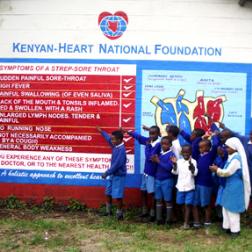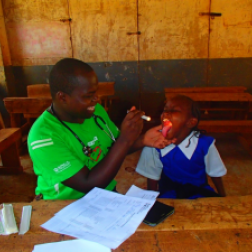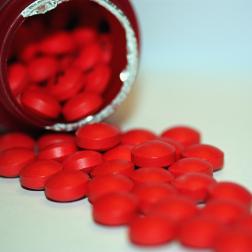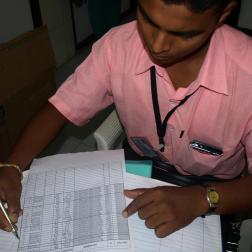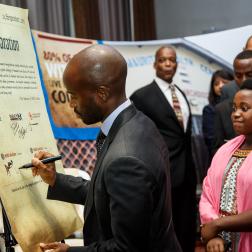Rheumatic Heart Disease: from Molecules to the Global Community - Summary Day 2
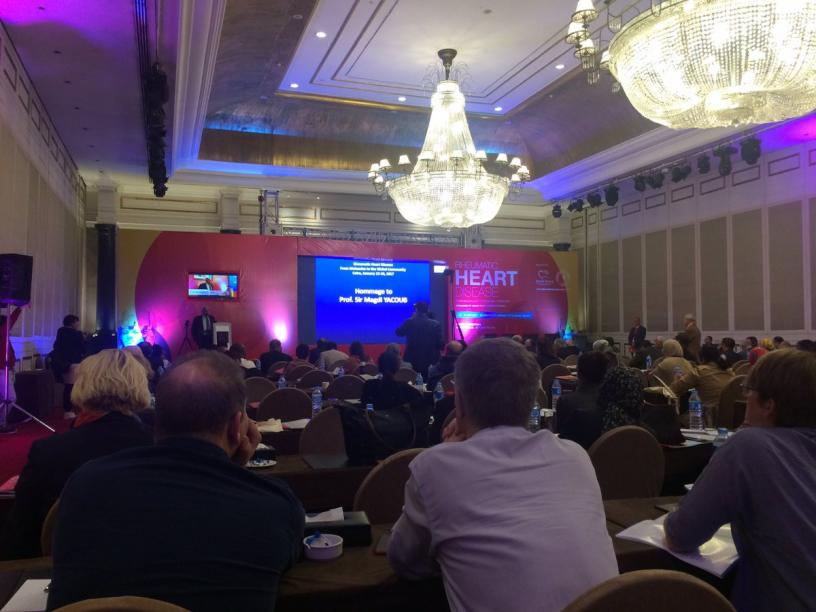
Saturday 14 January marked the official opening of ‘Rheumatic Heart Disease: from Molecules to the Global Community’, a meeting convened by the Aswan Heart Centre and the Pan-African Society of Cardiology (PASCAR) in Cairo, Egypt to address the burden of rheumatic heart disease.
Opening Ceremony
In his introduction, Sir Magdi Yacoub noted that while rheumatic heart disease (RHD) has almost disappeared from the western world, it continues to represent a significant burden of disease in many developing countries. However he expressed optimism in the health community’s ability to address this issue, stating: ‘we are ready to meet the challenge, to get rid of RHD’.
Sir Magdi Yacoub: we are ready to meet the challenge, to get rid of rheumatic heart disease pic.twitter.com/MSBsbaBM0w
— RHDAction (@RHDAction) January 14, 2017
His call to action was echoed by Rt Hon Lord Paul Boateng of the Planet Earth Institute. Citing the African proverb ‘it is each and every feather that makes the eagle soar’, Lord Boateng appealed to the audience to make the best possible use of the diverse skills in the room, and to include ministers, doctors, researchers, policy makers and civil society in the global effort to tackle RHD.
The ceremony was concluded with a statement from H.E. Ambassador Dr. Hazem Fahmy, Secretary-General of the Egyptian Agency of Partnership for Development, who focused on the collective humanitarian obligation to address the global burden of RHD. Referencing the need to reduce poverty and overcrowding, he stated: ‘[the continuing prevalence of RHD] is not acceptable – that is why this conference is so important’.
Epidemiology and the Global Burden of Disease
The first afternoon session of the meeting was comprised of presentations on epidemiology and the global RHD burden of disease, and on the genetic and geographic determinants of disease. David Watkins, from the Institute for Health Metrics and Evaluation, spoke on RHD data from the 2015 Global Burden of Disease study. After explaining the study methodology, Dr Watkins addressed the morbidity and mortality of RHD, estimating that RHD affects 33.2 million people in prevalent countries, causing 319,400 deaths. He noted that more data is needed among adults in lower- and middle-income countries and from longitudinal studies.
Professor Liesl Zühlke of the University of Cape Town closed the first session of the meeting in a presentation that summarized some lessons learned from registries. She said that they were a critical contribution to our understanding of RHD, allowing the assessment of current clinical practices and outcomes.
Pathogenesis and Vaccines
In the second afternoon session, the focus shifted onto pathogenesis and molecular vaccinology. Among the speakers was Professor Jagat Narula (Icahn School of Public Health at Mount Sinai, who delivered a presentation in which he examined the biological development – or pathogenesis – of rheumatic fever (RF) and carditis.
The day concluded with a presentation from Professor Diana Lennon on behalf of the Coalition to advance new vaccines against group A streptococcus (CANVAS) based in Australia and New Zealand. Reviewing the research groups and companies currently involved in the development of a vaccine for Group A Streptococcus bacteria, Professor Lennon drew attention to four leading vaccine candidates currently in various stages of development and investigation. She emphasized that a large number of diseases – beyond rheumatic fever and RHD – could be prevented by through the introduction of a successful vaccine, and struck an optimistic note, saying that development challenges were surmountable and that a vaccine for RHD was a realistic possibility in the medium term.
Day 3
Tomorrow, presentations in the morning will focus on pathology, clinical presentation and RHD prevention and screening, while the afternoon sessions will tackle contemporary management of RF and RHD.
To read more about ‘Rheumatic Heart Disease: from Molecules to the Global Community’, please look out for updates via Twitter and on our website.
